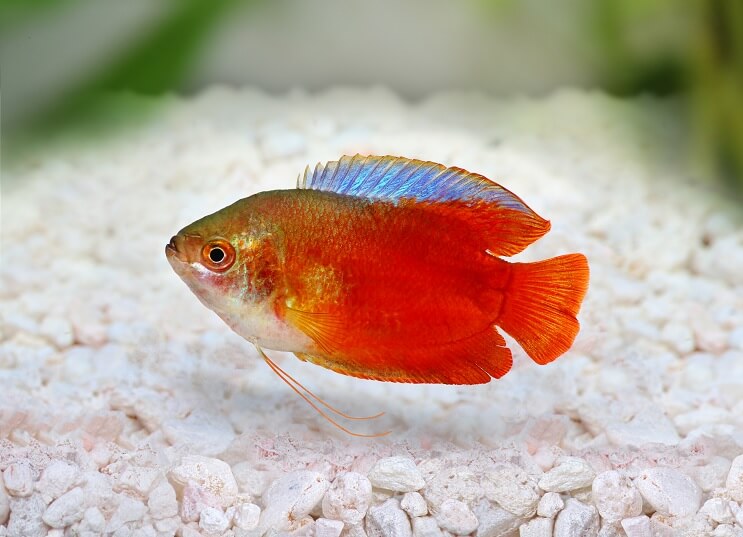
Are Fish Warm Blooded or Cold Blooded? Mystery Decoded By Expert
Contents
Warm-Blooded Vs Cold-Blooded
Science divides thermoregulation into endothermic or ectothermic; homoeothermic or poikilothermic,(poiˈkēləˌTHərmic). Endo and ecto thermic describe an animal that either makes its own heat or gets it from, the environment. Home and Poi kilo describe whether the temperature is constant. A cute Siamese cat is an endotherm and homoeothermic, it makes it’s own heat, and maintains a constant, body temperature; most mammals and birds are endothermic homoeotherms — what elementary, school would call warm-blooded. Fish, amphibians, reptiles and most invertebrates are ectothermic poikilotherms; they get heat, from the environment and let their body temperature fluctuate — what the youths would call cold-blooded. But that’s only part of the picture! They make their own heat, but don’t always maintain it. Some fish maintain a constant temperature and create heat by swimming from cold to warmer water, but can’t generate it themselves; leatherback turtles and lamnid sharks do this too! All I’m saying is, it’s a wider world than the black-and-white of cold versus warm blood!
But that’s not all! Dinosaurs used to be thought of as cold-blooded terror lizards that would obviously make AMAZING,PARK ATTRACTIONS DON’T WORRY NOTHING COULD GO WRONG.,// But a study in Science found dinosaurs were likely mesotherms — they used a combination of internal processes and environmental factors to adjust their overall body temperature! Plus, animals that hibernate like chipmunks and some bats are heterothermic! Yeah, It gets confusing, The reason we simplify it to warm and cold blooded is because temperature, which is mainly circulated by the blood, affects things like muscle function and brain size. Colder muscles react slower, meaning ectothermic animals have to behave sluggishly when the environment is cooler.
They have no choice! Even if a predator is around. According to spring and Holley’s Introduction to Zoology, with an 18 degree F (10C) change, in temperature, muscles contract three times faster, pulling three times the power. Knowing this, you can understand why yellowfin tuna evolved to be poikilotherms! Warmer muscles react better, allowing them to keep their bodies at a slightly higher temperature than the surrounding water; thus they maximize their power and catch prey. Mammals and birds range in temperature from 97 to 104F (37-40C) and that has a cost; we have to eat to live and regulate metabolism!
Pandas spend 10 to 16 hours a day eating, and the British Medical Journal recorded hunger strikers who lasted 40 days without food. But that’s child’s play; pythons can go a year between meals. So why aren’t we just SLIGHTLY regulating our temperatures like tuna? Seems like a big waste to burn all that energy and stay hot all the time, right? All that heat keeps our muscles ready for action. Endothermic animals can almost always outrun ectothermic animals; assuming they survive the initial strike. Ectothermic animals are better at that initial attack… think a snake or fast-fish! Insects with cold muscles can’t fly, the Sphinx Moth vibrates its muscles before takeoff to get them warm. Plus, cold animals may miss opportunities to use their muscles to get all upon and mate! Warm-blooded animals can mate ANYTIME.
Are Fish Warm Blooded or Are Fish Cold Blooded?
Fish Are Cold Blooded.
Alex Becker
Are There Warm Blooded Fish?
For anyone who doesn’t already know, fish are typically described as cold blooded creatures which means they get their heat from the environment they literally have cold blood, however there is one fish that bucks this trend The Opah. The Opah is also known as the moon fish, the sunfish, the king fish, the red fin ocean pan, the Jerusalem Haziq and by his Latin genus name lampreys (that’s a lot of names).
It was discovered in 2015 by Wagner. In the peer-reviewed journal Science Nicholas Wagner and his team of fellow research colleagues found that the upper species lampreys Curtis is able to generate heat as it swims from its muscles which warms the heart and the brain organs. This ultimately provides an evolutionary adapted advantage for the fish as it can out-compete traditional cold blooded species. The warmer temperature allows for faster muscle contraction and so fast a movement to acquire food and to avoid predators additionally.
The increased temperature improves the eye resolution helping to aid the fish’s sight neurological brain transmissions are also sped up helping to improve responsiveness which is great in their deepwater habitats where you never quite know what may be lurking in the darkness. So it’s a true warm blooded animal like mammals or Birds, not quite the warm-blooded system that we have provides us with something known as homeo but me now home your thermy allows our bodies to maintain a stable temperature internally regardless of external environmental heat factors the OPA fish on the other hand have to keep moving around to stay warm. Well they do have an insulating layer of fat to help keep in some of the heat ultimately. They will reach a colder temperature if their movement is restricted and they are more susceptible to external temperature influences.
